Sargento Makes a 10-Year-Old Boy’s Wish Come True
On Dec. 21, 2021, the Ball family from Winston-Salem, North Carolina, received devastating news: their son Maxx had Ewing sarcoma, a rare form of bone cancer that typically occurs in children and young adults.
Maxx’s wish: As he battled the potentially life-threatening disease, 10-year-old Maxx, whose cancer is now in remission, had one wish: to travel to Wisconsin to learn about the cheese-making process.
- “Most kids choose Disney World or a trip to Hawaii, but not my son,” said his mom Lauren. “He loves cheese and all things dairy, so he wanted to come to Wisconsin.”
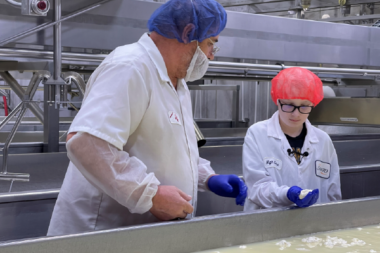
From wish to reality: The Make-A-Wish Foundation contacted Plymouth, Wisconsin–based Sargento—a leading manufacturer of shredded, sliced and snack natural cheese products—which was thrilled to grant Maxx’s wish.
Sargento has been a longtime supporter of the Make-A-Wish Foundation, partnering with other local businesses on an annual golf-related fundraiser that provides substantial support for Make-A-Wish Wisconsin. Sargento’s Executive Vice President of Operations and third-generation family owner, Mike McEvoy, has also served on the board of Make-A-Wish Wisconsin.
The itinerary: After arriving in Madison the Friday before Thanksgiving, Maxx and his family visited the Center for Dairy Research at the University of Wisconsin–Madison. He also met Wisconsin Gov. Tony Evers, visited
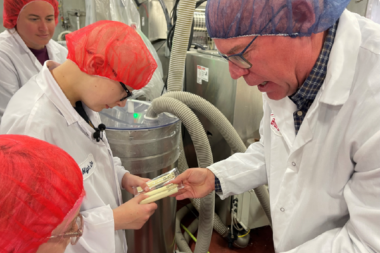
the Wisconsin State Capitol building, checked out the House on the Rock and then traveled to Green Bay to tour Lambeau Field. But the final day of his Dairyland tour was a stop at Sargento’s new location: Baker Cheese in St. Cloud, Wisconsin.
The visit: Sargento General Manager Brian Baker and Master Cheese Maker Jeff LeBeau provided a tour of the facility and explained the cheese-making process in detail. Maxx helped with making cheese curds, learned the documentation process and even operated one of the facility’s computer systems.
- “On our tour, he kept saying, ‘This is awesome,’” said Baker. ‘It really put Thanksgiving into perspective. They are a wonderful family, and what he’s gone through, to be here and to be so engaged and on the other side of his diagnosis, shows what’s really important.’”
The last word: “It was a great day, and it was a pleasure to help make Maxx’s wish come true,” said Sargento Vice President of Human Resources and Community Relations Karen Lepisto.
Dr. Ashish Jha on the Next Phase of Pandemic Response
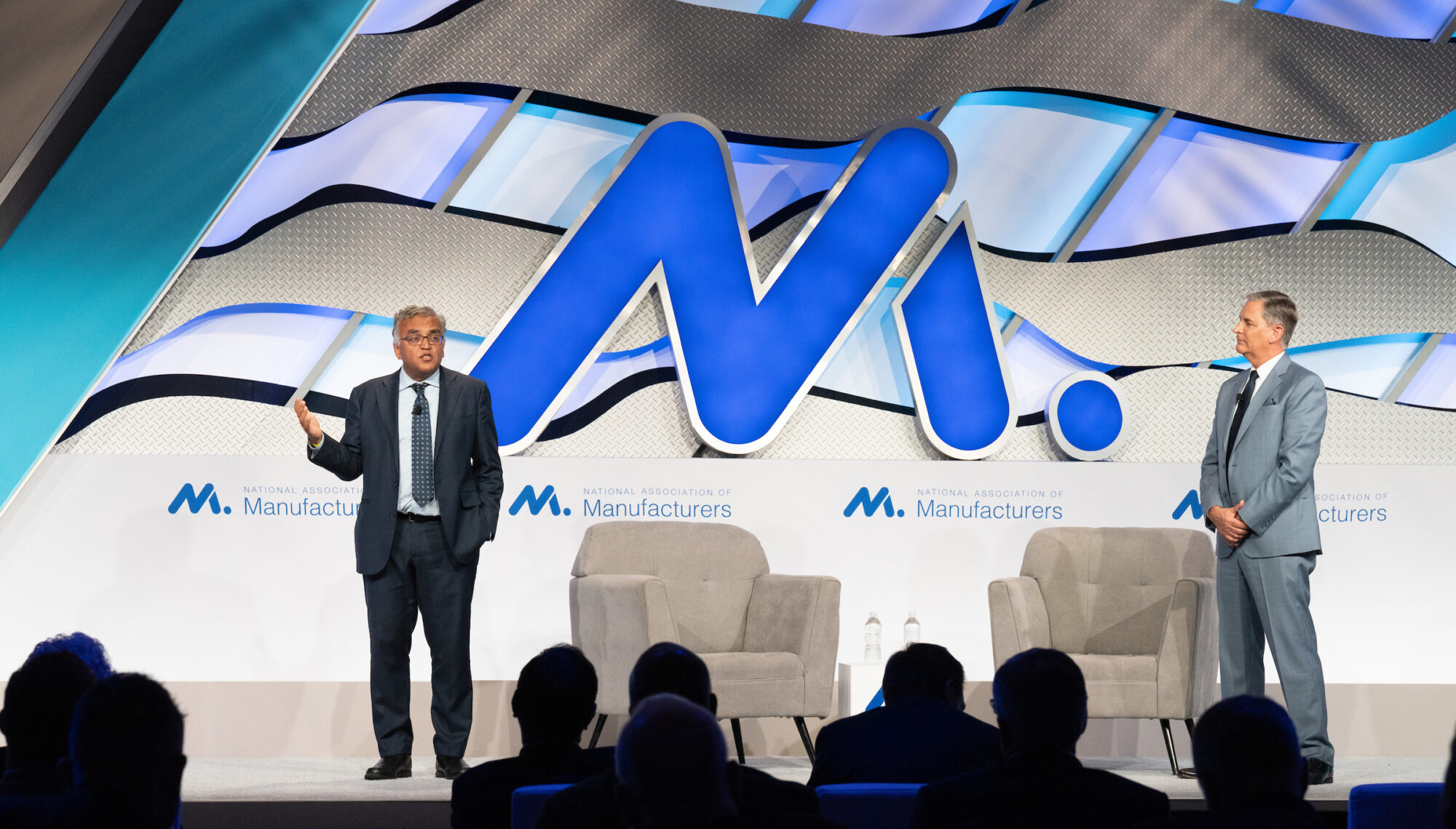
This winter, we might be facing both a difficult flu season and another surge of COVID-19. How can manufacturers help protect workers and all Americans from illness, hospitalization or worse? Dr. Ashish Jha, the White House COVID-19 response coordinator, gave a comprehensive answer at an NAM gathering of manufacturing leaders last week. Here’s what he had to say.
The situation today: Though both COVID-19 infections and deaths are down, Jha noted that if we keep steady at today’s numbers, we’ll be seeing 100,000 to 150,000 deaths per year—three to five times worse than the average flu season.
- However, “almost every one of those deaths is preventable,” he emphasized. In fact, we are better able to fight COVID-19 than the flu, as we have more effective treatments for the former.
- If we take some proactive measures, Jha added, we can “drive the death number down 90%.”
What to expect: The near future is rather worrying, according to Jha. The combination of COVID-19 and flu stands to hit us hard this winter.
- We’ve had two seasons in a row with “little to no flu”—in large part thanks to COVID-19 mitigation measures like masking and avoiding large gatherings.
- This year, however, people have largely stopped masking and are back to congregating in person. And there is reason to expect a COVID-19 wave anyway, as infections spiked during both the past two winters.
- Meanwhile, there are alarming indications that this flu season will be harsh. Jha noted that public health officials watch the southern hemisphere during our summer (their winter) to see what our flu season may be like—and this year, the southern hemisphere had an “early and robust flu season.”
- In addition, the health care workforce is truly exhausted after more than two years of the pandemic. “There’s no question that this is potentially challenging,” Jha concluded.
What to do: As alarming as the situation might be, Jha says there is “good news” as well. “We can actually control and prevent a large chunk of what might be coming down the path,” he said, as long as we focus on three key measures.
Vaccines: This is the big one. Getting people vaccinated against COVID-19 and flu is essential, said Jha, and the new BA.5-specific COVID-19 shots will make a big difference.
- The U.S. is the first country to authorize such a shot, and that means we now have a “vaccine that exactly matches the dominant variant” and that offers much better protection for today’s environment than the original vaccines.
- Jha praised manufacturers’ and the NAM’s efforts to encourage workers to get vaccinated and urged manufacturers to continue their efforts this season, including by offering paid time off for workers getting vaccinated.
Treatment: The second essential element is treatment. As Jha explained, we have very effective treatments for COVID-19, including antivirals and monoclonal antibodies. We must make sure that people have easy access to them, via test-and-treat sites and telehealth, for example. Employers can also help workers get these lifesaving treatments, he added.
- These medicines not only prevent hospitalizations and deaths, but also help people “clear the infection faster, so they feel better faster.”
- “There is some preliminary evidence that they also prevent long-term complications like long COVID as well,” Jha added.
Air quality: Last, Jha cited the importance of improving air quality to combat all respiratory infections, whether COVID-19, influenza or RSV (a common respiratory virus).
- Most Americans spend 90% of their time indoors, but don’t really think about the quality of the air they’re breathing, he noted.
- Yet, that air quality helps determine your likelihood of getting sick, and even “makes a difference to your cognition,” he pointed out. Research shows that improving air quality raised students’ test scores in schools and reduced worker absences.
- We can improve indoor air quality by upgrading filters, improving air exchanges with the outdoors or using air purifiers, he advised.
The long term: “The virus will continue evolving, and that means we need a long-term strategy for building people’s immunity,” said Jha.
- The next generation of vaccines—including nasal vaccines that block transmission and “variant-proof” vaccines—will truly put COVID-19 behind us. And we need to develop these vaccines fast, via a partnership between the government and private sector, he said.
- Improving indoor air quality will also have a huge long-term impact, he added, as the economy loses tens of millions of dollars from worker absences due to illness.
- “We should use this moment, with all that we have learned from this pandemic, to build a healthier society,” he said.
The last word: In conclusion, Jha said, “Let me wrap up by saying thank you for the incredible leadership so many of you have shown in bringing our country as far forward as it has come.”
- “This next set of challenges is every bit as big as the original,” he warned. Yet, when the public and private sector work together, they “can accomplish enormous things,” like the development and deployment of the COVID-19 vaccines.
- “My hope is that we can continue doing that work together. And if we do, we can certainly get through this fall and winter without disruption, without a lot more sickness . . . and get our country to a much better, healthier and more productive place.”
Manufacturers: Lawmakers Who Support Manufacturing in America Should Oppose This Reconciliation Bill
Washington, D.C. – Following news of a potential reconciliation agreement among Senate Democrats, National Association of Manufacturers President and CEO Jay Timmons released the following statement:
“This proposal is nothing more than a repackaging of the same bad ideas with a new name slapped on it. It is especially harmful because it will undermine manufacturers’ competitiveness at a time when the industry is reeling from supply chain disruptions and record inflation. Manufacturers kept our promises after the 2017 tax reforms, hiring more workers, investing in our communities and raising wages and benefits. Raising taxes now will hurt manufacturers’ ability to keep delivering for our people and mean fewer opportunities for Americans already worried about their financial future.
“Government price controls on pharmaceutical manufacturers are no less destructive. They will weaken our ongoing work to develop lifesaving cures to complex diseases like cancer and Alzheimer’s and harm our responses to health crises. It’s bad for Americans’ health. It’s wrong for our economy.
“While the language purportedly calls for comprehensive permitting reform to be passed by the end of the fiscal year, there is nothing that prohibits Congress from doing exactly that right now. Any member of Congress who is voting for the bill based solely on that language should not do so and should instead push to have a standalone bill considered.
“Lawmakers who support manufacturing in America should oppose this reconciliation bill. It will make manufacturing less competitive and America economically weaker.”
-NAM-
The National Association of Manufacturers is the largest manufacturing association in the United States, representing small and large manufacturers in every industrial sector and in all 50 states. Manufacturing employs more than 12.8 million men and women, contributes $2.77 trillion to the U.S. economy annually and accounts for 58% of private-sector research and development. The NAM is the powerful voice of the manufacturing community and the leading advocate for a policy agenda that helps manufacturers compete in the global economy and create jobs across the United States. For more information about the NAM or to follow us on Twitter and Facebook, please visit www.nam.org.
NAM Launches Six-Figure Television Ad Campaign Opposing Reconciliation
NAM Urges Senate to Vote “No” on Government Price Controls That Harm Manufacturers
Washington, D.C. – The National Association of Manufacturers has launched a six-figure broadcast and cable television advertising campaign ahead of a potential reconciliation bill that threatens manufacturing innovation and competitiveness. The campaign calls on senators to oppose government price controls that would undermine the development of lifesaving medicines and the livelihoods of manufacturing workers across America who deliver them.
“Government price-setting schemes that undermine our ongoing work to develop lifesaving cures to diseases like cancer and Alzheimer’s and respond to health crises are never the answer,” said NAM President and CEO Jay Timmons. “At a time when manufacturers are already facing extraordinary economic pressures, the Senate should be focused on bolstering our industry’s competitiveness, not undermining it. We are calling on senators to vote ‘no’ on reconciliation and stand with manufacturers and the hardworking Americans who are integral to battling this pandemic and discovering future cures.”
To view the latest television ad, click here.
-NAM-
The National Association of Manufacturers is the largest manufacturing association in the United States, representing small and large manufacturers in every industrial sector and in all 50 states. Manufacturing employs more than 12.8 million men and women, contributes $2.77 trillion to the U.S. economy annually and accounts for 58% of private-sector research and development. The NAM is the powerful voice of the manufacturing community and the leading advocate for a policy agenda that helps manufacturers compete in the global economy and create jobs across the United States. For more information about the NAM or to follow us on Twitter and Facebook, please visit www.nam.org.
Manufacturers Support Health Insurance for Older Workers
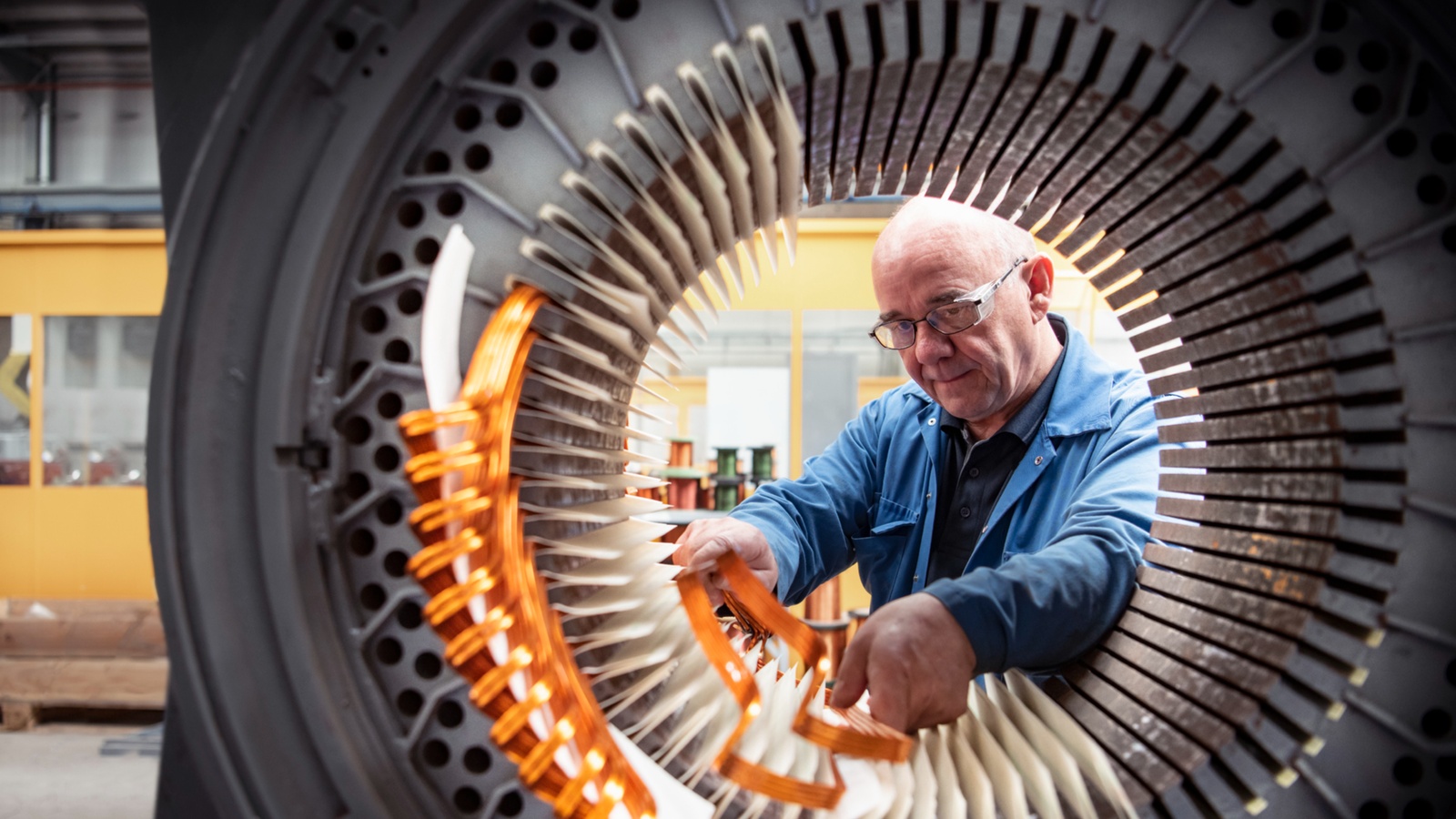
As the manufacturing industry continues to grow, manufacturers across the country are ensuring that older workers and company retirees have the support they need—including through health care options like Medicare Advantage.
What it is: Medicare Advantage Plans are offered by private insurance companies that have been approved by Medicare. They provide the same hospital and medical insurance as original Medicare, but with additional benefits—often including Part D prescription drug coverage, as well as vision, dental and hearing services. Medicare Advantage Plans also include a maximum out-of-pocket spending limit to offer additional protection.
- Medicare Advantage beneficiaries spend 40% less annually than those enrolled in Medicare Fee-for-Service, while also experiencing a 43% lower rate of avoidable hospitalizations for preventable complications, according to UnitedHealth Group.
- Employers have been able to take advantage of this health care model for retirees by offering what is known as Employer Group Waiver Plans.
Why it matters: Attracting and retaining a quality workforce is one of the most important challenges facing the manufacturing industry, especially as the industry confronts a labor shortage. Affordable and competitive health care benefits are one of many retention tools utilized by manufacturers.
- In 2021, 25.6% of the manufacturing industry’s workforce were 55 or older, while 5.3% were over 65, according to data from the Bureau of Labor Statistics.
- According to the NAM’s latest Manufacturers’ Outlook Survey, 80.7% of manufacturers cited the inability to attract and retain a quality workforce as a primary business challenge.
- The high-quality options provided by Medicare Advantage allow manufacturers to retain their older workers and keep them happy and healthy in their jobs.
What we’re saying: “Ninety-five percent of manufacturing employees were eligible for health insurance benefits in 2020, according to the Kaiser Family Foundation, while 99% of NAM members offer health benefits. Manufacturers are supportive of flexibility, expanding coverage options and enabling innovative models of care to maintain a healthy workforce and provide competitive benefits,” said NAM Director of Human Resources and Innovation Policy Julia Bogue.
For details on other ways manufacturers can retain older employees check out insights from the Manufacturing Institute and AARP here.
NAM Outlines Health Care Priorities

In a message to members of the Congressional Health Care Task Force, NAM President and CEO Jay Timmons urged Congress to pursue several health care priorities for manufacturers.
The big picture: Timmons laid out three core principles that guide NAM health care advocacy and engagement.
- First, the NAM believes that free enterprise, competitiveness, individual liberty and equal opportunity are the values that can successfully push forward the process of simplifying health care and achieving lower costs.
- Second, the NAM believes that the medical credo “first, do no harm” should guide health care policy efforts.
- Third, the NAM believes that the health care policy and business environment must allow and encourage unparalleled innovation, investment and manufacturing right here in the U.S.
In accordance with these principles, the NAM is pushing for several specific policy advances.
Transparency: “Manufacturers appreciate ongoing efforts to improve transparency in health care,” Timmons wrote. “Our industry has experienced the impacts of cost variation related to a range of health care services. These impacts can make health coverage more frustrating and expensive, for both consumers and employers who sponsor coverage.”
Connectivity: “The technology is available, and businesses have the capability to deliver and realize the potential of a fully connected health care system,” Timmons wrote. “Privacy laws and regulations need updating so that the deployment and adoption of new innovations to improve connectivity in our health care system can flourish.”
HSAs: The NAM believes Health Savings Accounts allow employees to have more control over their health care spending. To ensure HSAs can increase consumer flexibility and benefit American employees, the NAM supports efforts to increase limits and modernize rules governing HSAs.
Value-based arrangements: “Manufacturers are encouraged by the potential for health care innovation through outcomes-based health care arrangements,” Timmons wrote. “These arrangements would align incentives across a range of parties—health care providers, employers, patients, insurers and pharmaceutical and life sciences manufacturers—so that delivery of care, payment arrangements and clinical outcomes are achieved in an efficient manner.”
Association health plans: The NAM supports efforts to reform, advance and strengthen Association Health Plans. AHPs are beneficial especially to small businesses that struggle to offer affordable health care coverage to their employees. The NAM believes that additional legislation is needed to protect the longevity and sustainability of AHPs as a health care option.
Innovation: The NAM believes strong intellectual property protection is essential to creating a more competitive health care market, bringing down prices and fostering innovation by encouraging research and development.
The last word: “Despite the many challenges and strains facing the health care system, we are a nation that prides itself on first-class, best-in-the-world medical care,” Timmons wrote. “Our institutions, public and private, continue to lead the world on patient care, lifesaving treatments and medical research. We must uphold those successes while seeking to control or lower the cost of health care through market-oriented approaches. Employers are leading a great deal of innovation in health care delivery, and those positive developments must be allowed to flourish.”
Manufacturers on Supreme Court Decision
Washington, D.C. – National Association of Manufacturers President and CEO Jay Timmons released this statement following the Supreme Court’s ruling in Dobbs v. Jackson Women’s Health Organization:
“America is at its best when we address difficult questions in a spirit of compassion and empathy, with respect for each other’s deeply held views. That is the example that we will strive to set at the NAM. Our mission is to uphold the values of free enterprise, competitiveness, individual liberty and equal opportunity, which we know have made America exceptional and kept manufacturing strong.
Even amid all positions and strongly held views, many businesses must now discern how best to support employees and families within the framework of the law. The NAM will work to connect our member companies with the legal, HR and health care information and resources they need to navigate the effects of the ruling.”
-NAM-
The National Association of Manufacturers is the largest manufacturing association in the United States, representing small and large manufacturers in every industrial sector and in all 50 states. Manufacturing employs more than 12.7 million men and women, contributes $2.71 trillion to the U.S. economy annually and accounts for 58% of private-sector research and development. The NAM is the powerful voice of the manufacturing community and the leading advocate for a policy agenda that helps manufacturers compete in the global economy and create jobs across the United States. For more information about the NAM or to follow us on Twitter and Facebook, please visit www.nam.org.
AlloSource Honors Tissue Donors, Heals the Living
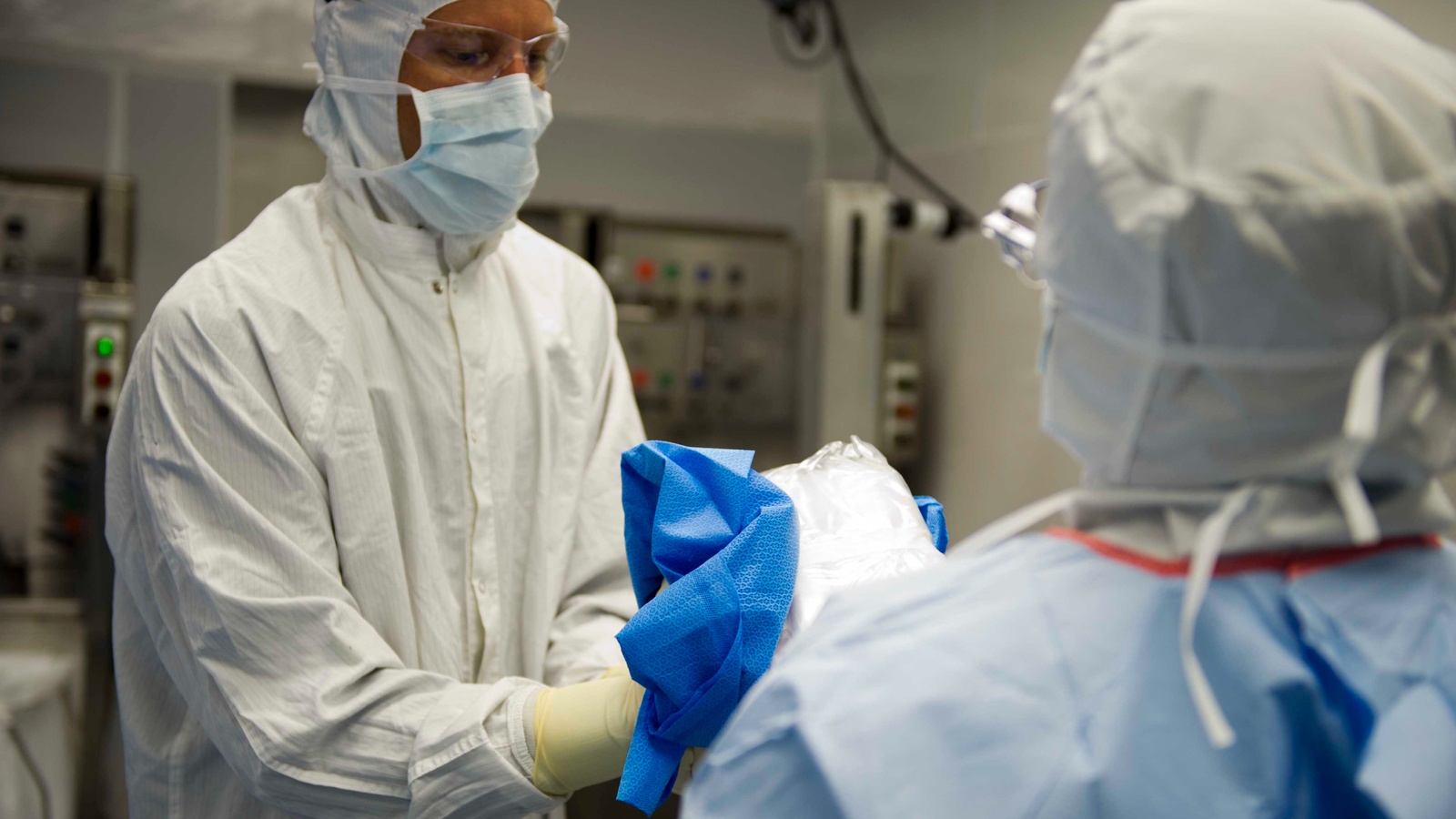
The supply chain of biotechnology company AlloSource looks a bit different from the supply chains of other manufacturers—mostly because it hinges on the donation of human tissue.
A different kind of manufacturing: For nearly three decades, Colorado-based AlloSource has transformed donated human tissue from deceased individuals into transplantable products, or “allografts,” that surgeons can use to heal living patients.
- “Something that distinguishes AlloSource among manufacturers is [that] our base materials come from donated human tissue, which makes manufacturing very complex,” said AlloSource Chief Operating Officer Dean Elliott.
- “Donors vary in age, size and many other factors, so a lot of planning takes place to ensure the gift of tissue donation is fully maximized. Each allograft takes a different amount of time to create through a variety of unique processes.”
- Common tissue recovered for donation includes skin to treat burn victims and bones and ligaments for use in orthopedic procedures to restore mobility.
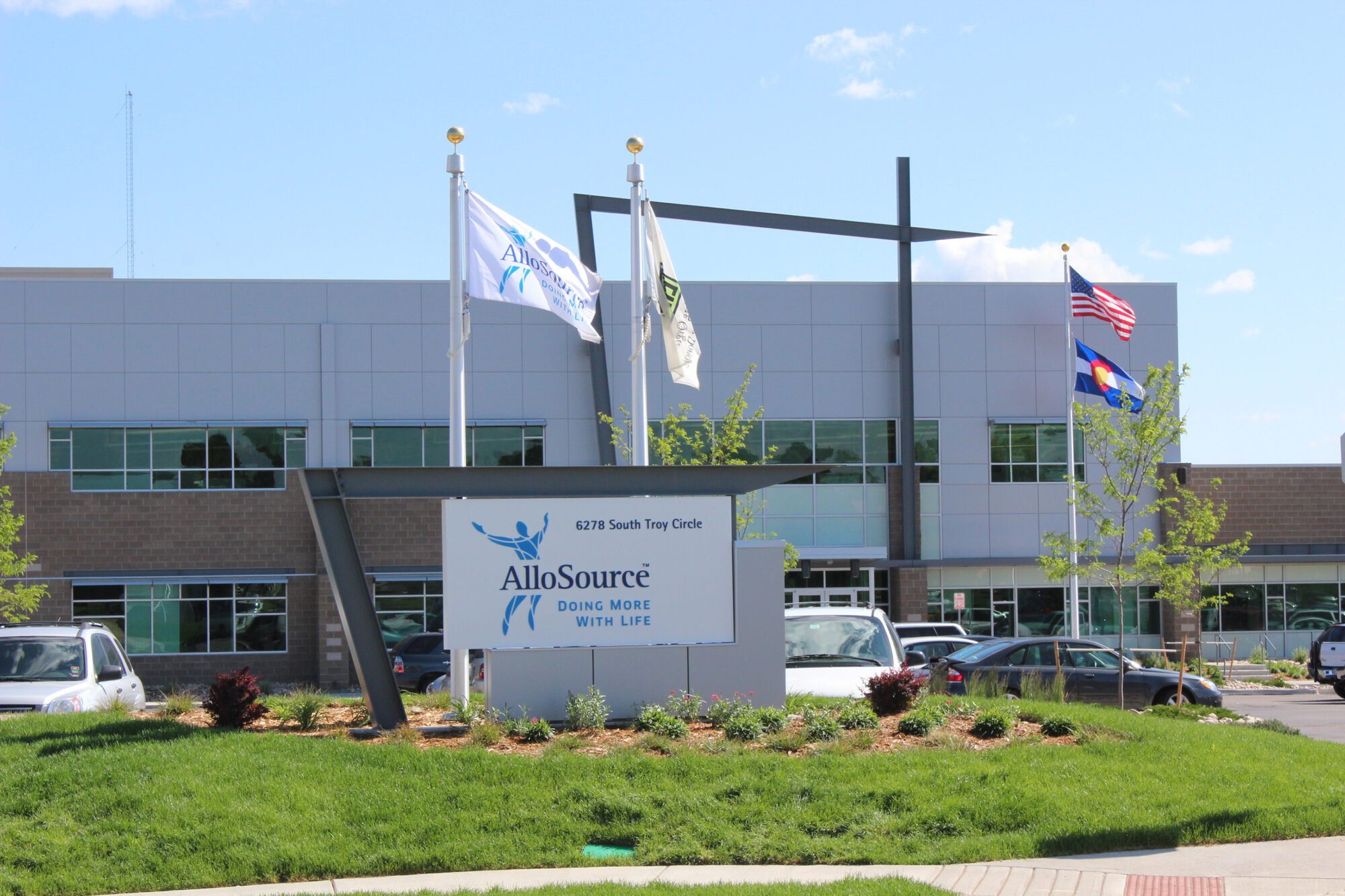
Meeting a need: AlloSource, which today is one of the largest providers of allografts in the world, was founded in 1994 by three organ procurement organizations “out of a need for expertise in transforming deceased human donor tissue into transplantable products,” Elliott said.
- Today AlloSource produces approximately 200 different types of allografts, which are used in surgeries ranging from spinal fusion to shoulder rotator-cuff repair.
- In 2021, the company used tissue from nearly 8,000 unique donors to place more than 200,000 allografts in all 50 states and in 25 countries.
How it works: Following the passing of a donor, a local tissue-recovery agency has just 24 hours to recover the tissue to be made into allografts.
- “One of the miraculous things that happens when someone dies is their cells stay alive—and as long as the tissue is recovered and sent quickly, AlloSource can preserve the tissue while keeping the cells viable,” Elliott said.
Always innovating: AlloSource has made great strides in its field over the past few decades. The company recently patented a method of decellularizing skin, a process that lowers the risk that an allograft will be rejected by a recipient. The method was developed by its R&D and engineering teams.
- This method “keeps our in-house cleanroom usage at a minimum while allowing for a higher volume of processing so that we have enough allografts available to help more patients,” Elliott said.
Meaningful work: At a time of record-high job openings, the biotech organization has a high level of employee retention—thanks to “our unique mission,” Elliott said.
- “We offer competitive pay and benefits and the opportunity to grow in an evolving medical field,” Elliott said. “But we also look for people who are driven by a mission of helping others—and that culture is ingrained in our day-to-day operations.”
WTO TRIPS Decision Jeopardizes Pandemic Response, Manufacturing Competitiveness
Washington, D.C. – Following a decision by the World Trade Organization to lift intellectual property protections for COVID-19 products, National Association of Manufacturers President and CEO Jay Timmons released the following statement:
“This damaging decision will undermine American innovation, competitiveness and technology leadership—weakening manufacturing in America and threatening the jobs of manufacturing workers. Even worse, the agreement could exacerbate the supply chain and logistical hurdles that represent the biggest current challenges to global efforts to ensure access to critical COVID-19 products.
“It is alarming and disappointing that the United States would join other countries to give away manufacturers’ innovations to our commercial rivals. Our industry has been on the front lines of efforts to fight COVID-19—developing, manufacturing and distributing vaccines and other essential products needed to save lives and strengthen our economy. American innovation has been at the heart of the manufacturing response to the pandemic and will be just as critical for our ability to lead the world and respond to future global health crises.
“Manufacturers have been vocal supporters of effective solutions at the WTO that leverage trade to fight the pandemic—but this waiver is not one of them. Manufacturers call on the Biden administration to reverse course on this decision and take immediate action to protect this vital technology, American workers and global health.”
-NAM-
The National Association of Manufacturers is the largest manufacturing association in the United States, representing small and large manufacturers in every industrial sector and in all 50 states. Manufacturing employs more than 12.7 million men and women, contributes $2.71 trillion to the U.S. economy annually and accounts for 58% of private-sector research and development. The NAM is the powerful voice of the manufacturing community and the leading advocate for a policy agenda that helps manufacturers compete in the global economy and create jobs across the United States. For more information about the NAM or to follow us on Twitter and Facebook, please visit www.nam.org.
“The Right Thing to Do”: Toyota Provides Overnight Child Care
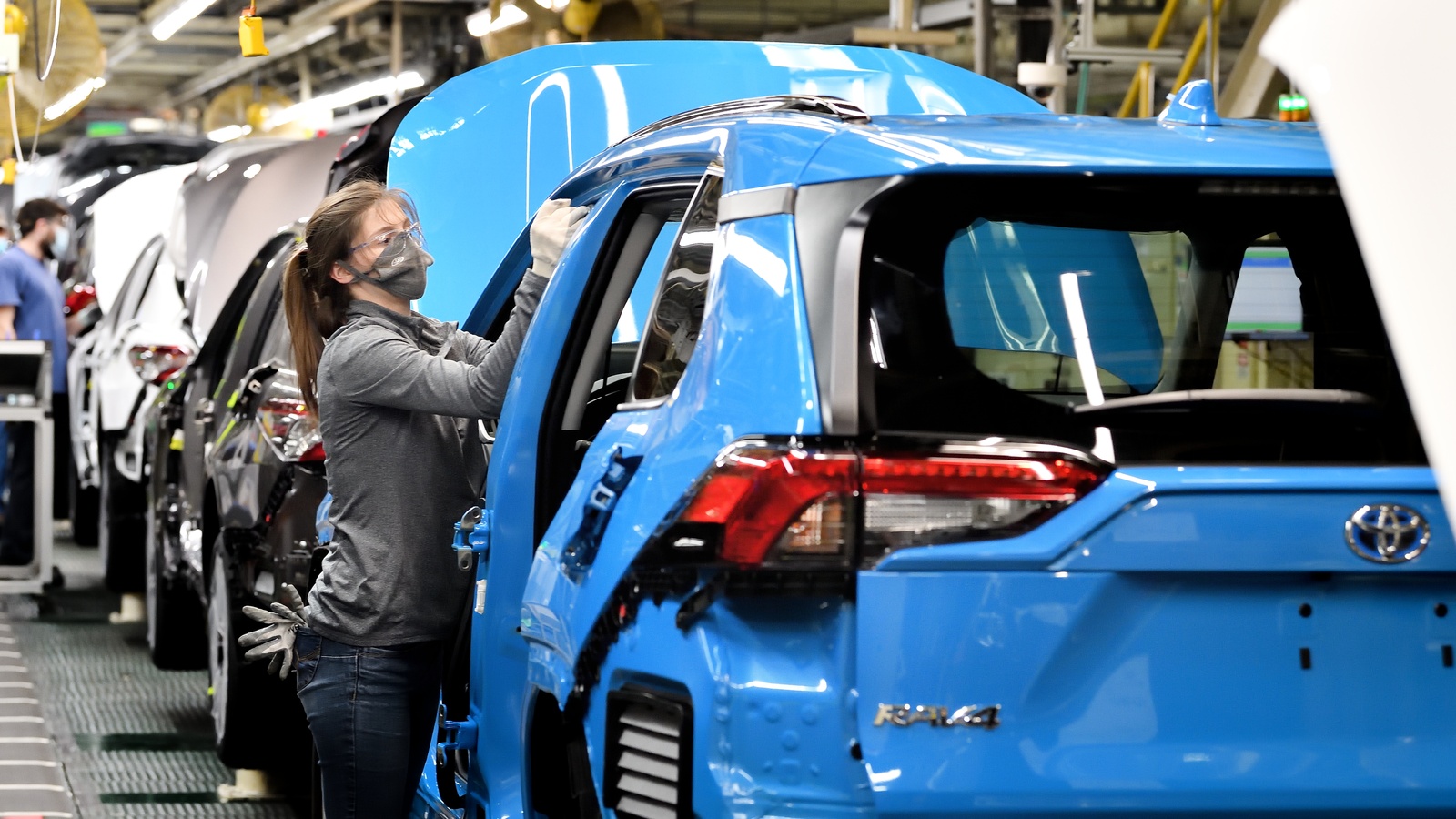
For parents who work the night shift, the prospects for high-quality child care are usually dim. Not so for those who work at one of Toyota’s major U.S. manufacturing sites, however.
Toyota North America has been providing onsite, 24-hour-a-day care for employees’ children at its largest global site, in Georgetown, Kentucky, since 1993, and at its Princeton, Indiana, facility since 2003. The company subsidizes care to ensure affordability for all employees.
Not just a retention tool: “I’ve been asked, ‘Is this just a retention tool?’” said Toyota Group Manager for People and Property Services Myriah Sweeney, who oversees the auto manufacturer’s Family Care Services division, which includes child care. “The answer is no. Our employees take care of us, and we take care of them.”
- This was especially true during the COVID-19 pandemic lockdowns, when nearly one in five working-age adults left the labor force to care for children.
- Toyota’s care center stayed open and even offered in-person learning “pods” for school-age children.
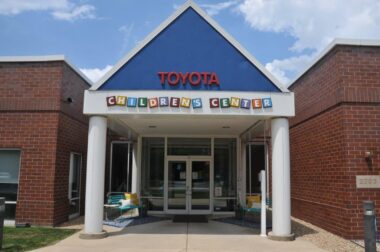
The Toyota family: Employer-provided child care—particularly of the Toyota type, which is open overnight and on Saturdays and managed by the award-winning Bright Horizons Family Solutions Inc.—is a highly prized benefit.
- “We hear from families all the time, ‘This is part of the reason I stay here,’” said Sweeney, who counts herself among that contingent. “We actually have some employees now that were kids in our center that we helped raise and are now teachers or are working at Toyota. It creates a sense of family.”
- Toyota’s child care benefit has “touched approximately 10% of the workforce” over the past five years, Sweeney said.
How it works: Toyota’s two care facilities, which “are open pretty much anytime Toyota is open,” cater to children as young as six weeks.
- There are pick-up and drop-off points for local school bus routes, and center employees feed breakfast to early morning arrivals and dinner to overnight and late-stay attendees.
- Care-center teachers also help with homework and get kids safely on and off buses.

Additional benefits: The vehicle maker’s Family Care Services extend beyond children to include tutoring and pet care company discounts, counseling services and informational help for employees who act as caregivers outside of work.
- Toyota also gives every team member 15 days a year of “emergency backup care,” a company-subsidized program that allows employees to have vetted, qualified care providers come to their houses to look after elderly relatives or children “when things go haywire—the water main breaks or a babysitter calls in sick,” Sweeney said.
Next up: Toyota plans to expand the child care capacity at its Indiana plant, to the tune of an additional 75 to 80 spots, Sweeney said.
- The company is also working with architectural firms in Mississippi to design a child care facility for its factory in that state, which is located in an area with few child care centers.
The last word: Toyota’s interest in providing employees with support goes beyond wanting to maintain its workforce.
- “We try to encompass everything that anybody would possibly need and help them with that,” Sweeney said. “It’s just the right thing to do.”
